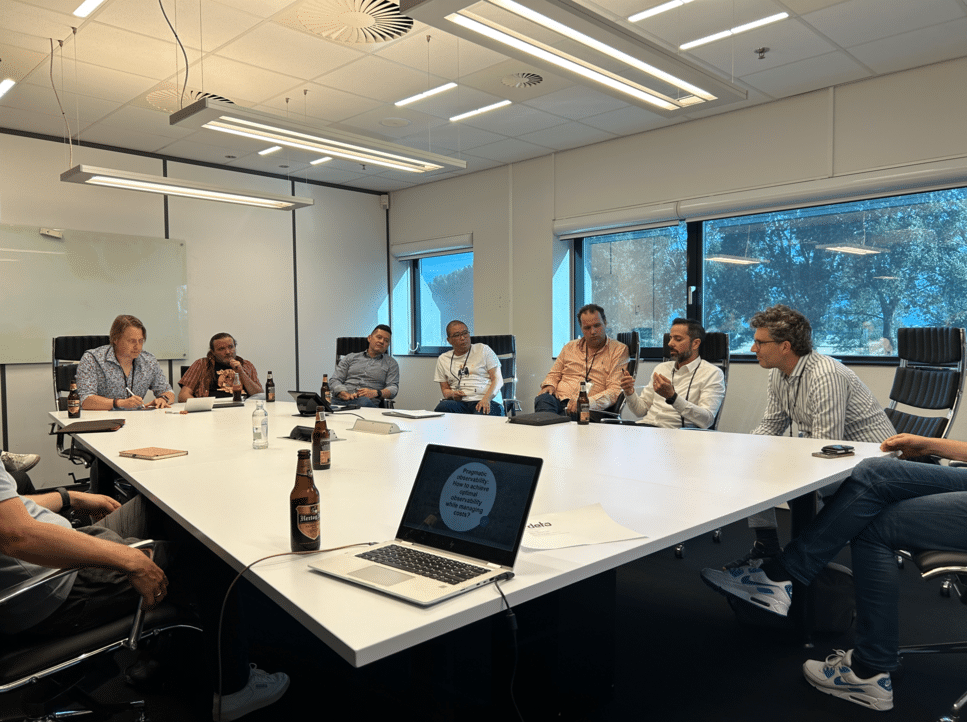Referring to Certified Technical Architect’s as the ‘Salesforce Elite’, earlier this year Salesforce published an article detailing exactly why everyone should aspire to reach certified technical architect status.
This got me thinking , desire aside, what does one need to do to become a Salesforce Certified Technical Architect? To help us answer this question, we sat down with Timothy Gentet-O’Brien, Technical Architect at EMPAUA. Timothy discusses exactly how he made the leap into technical architecture, and his recommendations for others looking to do the same.
1. Get your certifications – but don’t rely on them
As Tim puts it, ‘certifications are definitely good, because they tell you what you need to learn’. However, Tim also highlights that those looking to climb the Salesforce ladder shouldn’t solely focus on ticking the box and getting their certification, because that piece of paper doesn’t mean everything in the world of technical architecture.
Tim maintained that certifications are limited in how much they can advance your knowledge or progression. You should therefore use certifications to understand what you need to know, but should then look beyond the certification curriculum if you truly want to understand technical architecture.
2. Focus on your soft skills
It’s something we’ve heard over and over again, but the industry’s focus on soft skills simply isn’t going to abate anytime soon. As technology continues to evolve and advance, professionals still need to be able to interact with stakeholders – this is especially true at the technical architect level.
When we spoke with him, Tim highlighted ‘for anyone who wants to succeed as a technical architect, soft skills cannot be secondary’. Simply put, you need to be able to hold a conversation, and be able to build relationships with clients and speak to them on a non-technical level that they will understand. It’s only by focusing on your soft skills and bringing them up to scratch will you be able to achieve that.
3. Keep on top of the ecosystem and keep learning
One of the beauties of the Salesforce ecosystem is that it is constantly changing, evolving, and growing. Compare it now to what it looked like even a year or two ago, and the advancements are incredible. These constant changes can make working in the industry (and advancing within it) slightly difficult because you need to constantly refresh your knowledge.
Never assume you know everything, you definitely don’t. Therefore, to succeed as a technical architect you have to put the time and effort in to ensure you remain on-top of the technology and what is happening in the industry. Tim spends a few hours a month reading and re-confirming his knowledge using tools like the Salesforce Developer Guides on their Success website. He summarises the importance of continued learning ‘When you work in an ecosystem that changes as much as this one does, you cannot forget the importance of reading and learning’.
4. Know your Javascript
From a very practical standpoint, Tim maintained that learning the prerequisite is a fundamental step to becoming a technical architect. Tim then took his Javascript knowledge and transferred it to Apex as he advanced his skills. His reasoning? Javascript underpins a lot of Salesforce architecture, for instance, lightning components are all in Javascript.
Aside from that, he noted that the language is pretty easy to learn, and that there are a lot more video-based resources online that are slightly more interactive than Trailhead because someone is explaining everything as you go. Tim also maintained that he ‘tells a lot of people to do this, and not one of them actually has. It’s a great way of gauging if someone is serious about becoming a technical architect or not’.
5. Become business-minded
If you want to succeed as a technical architect, and reach the top of the Salesforce ladder, then it’s important to remember that a good technical solution is not enough if it doesn’t meet a business need.
You have to be able to look at the bigger picture, and to understand how what you do affects the business as a whole. Becoming a technical architect might take a mind shift from fixing a problem (such as a single and isolated incident in a line of code) to fixing the problem, an issue that is impacting the entire business.
6. Practise simplification
Being a technical architect doesn’t mean you can build the most complex solutions; it means you can develop a solution that fixes a need. Sometimes, that solution will be simple and sometimes it will be more complicated.
The hallmark of a good technical architect is being able to dig deeper to understand the goals of the process and avoid over-engineering a solution. You’re more likely to achieve success when you design to meet a need, rather than designing for complexity and to make something cool.
Read Tim’s interview in full here.
If you’re a Salesforce professional looking to land your dream job, or looking to climb the Salesforce ladder, get in touch with one of our specialised Salesforce consultants.




